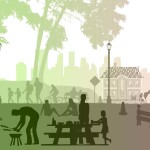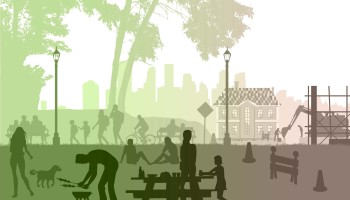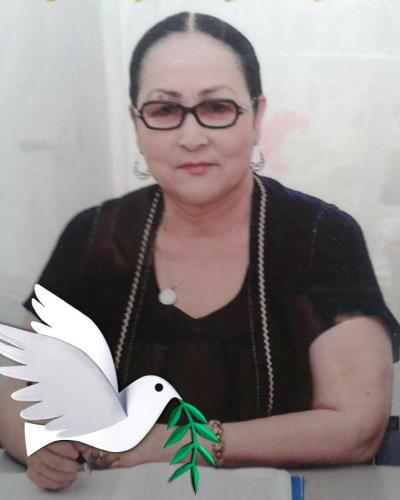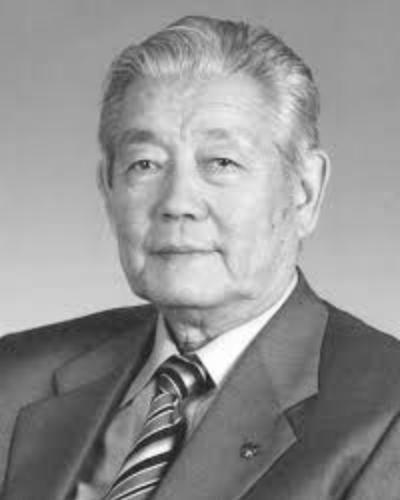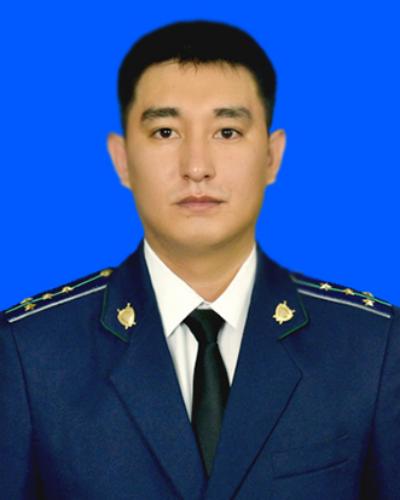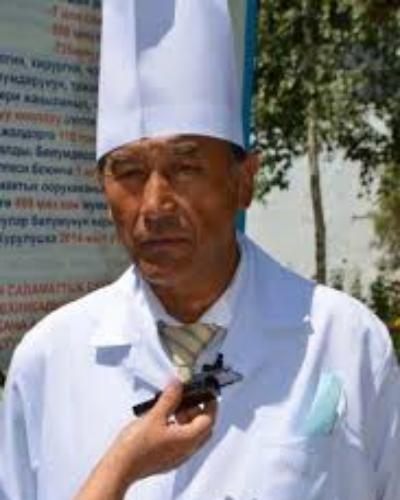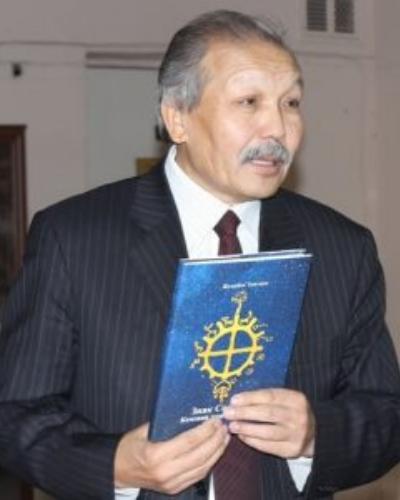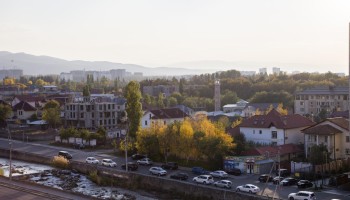In this centrally planned city on the steppe, filled with Soviet-style concrete blocks and cut through with wide grey boulevards, Ataturk Park was once a green refuge.
Dense with trees and beds of vivid red poppies and purple bellflowers, it would fill up every summer day with shouting children, and every evening with dog-walkers and workers relaxing after long shifts.
Marina Plogova, now in her mid-50s, treasures her memories of playing in the park as a child, when she lived just across the street. She remembers cooling down on hot summer days under its trees, then racing off to buy cotton candy or ice cream from its itinerant vendors.
“Everything was excellent,” she recalls, “and the park was good and green.”
Today, neither of those things is true.
Starting in the early 2000s, Bishkek residents began to notice something strange happening deep within Ataturk. Fences and walls sprouted up amid the green. Dust and construction noises emerged from within. Foliage in the center of the park was burned, poisoned, or cut down, leaving just a thin ring of trees around its perimeter. And nobody could explain why.
Over the course of a decade, Bishkek residents saw the park’s trees and flowers replaced by opulent villas, swimming pools, and garages. A group of concerned citizens launched letter-writing campaigns and held protests, but to little effect.
It was clear that the park was slowly shrinking away, but the whole picture of who was receiving the land, and how, remained a mystery — until now.
A year-long investigation by Kloop, OCCRP’s member center in Kyrgyzstan, found that four Bishkek mayors, as well as three other officials, personally signed away more than a third of the park’s territory, much of it to private owners, over the course of two decades. There was little or no oversight.
Reporters spent a year collecting land records for each parcel of land in the park, filing dozens of requests for information, and analyzing the hundreds of documents they obtained.
At the Registry Office
While land records in Kyrgyzstan are ostensibly public, they are not easy to obtain.
They found that a total of 181 plots had been handed out directly to 173 private owners between 2000 and 2008. Many of these were wealthy and well-connected people, including ministers, members of parliament, judges, prosecutors, policemen, professors, and businessmen.
Among the recipients is the current president of Kyrgyzstan, Sooronbai Zheenbekov. He was given a free plot of land in the park in 2003, when he was an MP. He sold it seven years later, netting a financial windfall of an unknown size.
The Land Code of Kyrgyzstan, put into place in the late 1990s to establish clear rules for private tenure after decades of collectivized ownership, allows the government to give out a plot of land to each citizen once within his life. The same law prohibits granting ownership of any public territory, including parks, or constructing any buildings there.
In 2005, a new regulation governing the application of the law specified additional restrictions which, in theory, should have excluded Kyrgyzstan’s wealthier citizens from benefiting: Only those who did not already possess property sufficient for their needs could receive land.
However, in practice, many of those who received plots in Ataturk Park were wealthy and powerful. And it is clear that most of them did not need the land. Four out of five sold their plots, some within months of receiving them.
The Application Process
The application process to receive free land is not an easy one.
Today, what was once known as the “people’s park” is home to some of the fanciest villas in Bishkek, and it’s one of the hottest property markets in town. Land there sells for an average of $100 per square meter, a significant amount in a country where the average monthly salary is about $240.
Ataturk Park is perhaps the most glaring example of the abuse of Kyrgyzstan’s Land Code, but it is not alone. Other parks in Bishkek have also been eaten away by private land grants. According to a parliamentary commission, illegal private land grants were also made in Karagacheva Roshcha, the biggest park in Bishkek, which is also a historical and cultural monument. Originally it was two times larger than Ataturk, but local authorities significantly reduced its size and destroyed many of its trees. Just over half remains today.
Two of the four mayors who signed away Ataturk plots did not respond to requests for comment. The other two are fugitives outside the country and could not be reached.
Marina Plogova still walks near Ataturk Park with her dogs, but the area is a shadow of what it once was.
“Birches, firs, pines — everything is lost, everything is dried up,” she lamented. “Everything is watered only at the beginning of the park to have a good view where the entrance is, and further in, everything is gone. There are either houses or dried-up trees. If you go there, there is nothing to see,” she said. “Only the [elites] are there. And no one, no one will evict them.”
Noteworthy Cases
The “People’s Park”
In the early 1960s, when Kyrgyzstan was still a part of the Soviet Union, local authorities decided that Bishkek residents deserved a new green space in the city center.
In typical Soviet fashion, they had to work for it. Schoolchildren and workers were drafted into brigades of volunteers, clearing away rocks, carting in soil, and planting trees.
Starting from two dozen acres of lush land already in use as a botanical garden, the volunteers expanded the green space outwards to merge with two other small parks, Friendship and Victory. The resulting agglomeration was dubbed “50 Years of USSR Park.”
Chinara Seidakmatova, a lifelong resident of Bishkek, has vivid memories of the weekends she spent helping build the park as a middle-schooler.
“I remember we came here for clean-ups on Saturdays,” said Seidakmatova, now 64. “Schoolchildren, students, workers — everybody came here to work and plant seedlings. I remember how small they were.”
Over the next few decades, as those seedlings grew into towering trees, Bishkek authorities expanded the park and added an artificial lake. The government even developed an ambitious plan to enlarge it into a huge green zone with new sports facilities.
But after the collapse of the Soviet Union in 1991, Kyrgyzstan’s newly independent government abandoned that plan. In the mid-1990s, they renamed it Mustafa Kemal Ataturk Park, in honor of the Turkish nationalist leader, and leased the entire 107-hectare territory to a shadowy private group, the International Ataturk Foundation. According to its founding documents, this organization is meant to research and promote Ataturk’s political legacy, but little is publicly known about its activities.
The 49-year lease required the Ataturk Foundation to restore the park, but there is no evidence it did anything. Bishkek’s City Council ended the lease in 2004.
Meanwhile, by the late 1990s, chunks of the park were being given away for various purposes. Some of the first land given away was set aside for a new university campus (which, in the end, was never built due to funding difficulties.) Another large property was set aside for a charitable foundation which was used to build a residence facility for disabled children.
In 2000, the first three private owners received their own plots in Ataturk Park. Another received a plot the following year.
Click below to see a time-lapse animation of Ataturk Park land being parceled out:

“The high point of the park was in the late ’80s,” said Seidakmatova. “It was densely planted and flowering. Then, near the end of the ’90s and the beginning of the 2000s, trees dried up in the areas where houses were built.”
The granting of park territory to private citizens was already a violation of Kyrgyzstan’s Land Code. In addition, in 2002, the government declared the entire park a national historical monument, which was supposed to bar any development or construction within.
But in fact, land grants inside the park actually intensified after it was declared a protected area.
Some additional public-facing projects were undertaken, which take up 11 percent of the park’s land: The territory now contains a prosecutor’s office and an outdoor entertainment area known as the “love park,” which features a giant heart that lovers and newlyweds can take pictures in front of.
But a large percentage of the land given away — 20 hectares, which comprises just under 20 percent of the park — is now in private hands. Most of these areas are fenced off and filling up with mansions, villas, and swimming pools. Reporters found that many of those who received this prime land from the city’s administration were wealthy and influential: ministers, members of parliament, prosecutors, judges, businessmen, and their relatives. In many cases, the land was given out as if by neighborhood, with colleagues and people working in the same field receiving plots near each other.
Elite Neighborhoods
Battle for the Park
In the southern part of Ataturk Park once stood a small stable surrounded by trees. It was a place where children could learn how to take care of horses and ride them. Children with autism and cerebral paralysis also went there for hippotherapy — a special treatment technique for rehabilitation using animals, horses in this case.
The stable was owned by Manasbek Sultanov, who ran a horse riding school called Rider. He says that he got the stable for $1,500 in the late 1990s from a municipal institution that takes care of trees and flowers in the city.
“We conducted free [horse riding] courses for children and even fed them lunch. Everything was good,” said Sultanov.
“We had one girl with severe scoliosis. Because of it, she even started to have problems with her eyes. After three years she fully recovered,” he added.
But it wasn’t to last. In 2011, the Mayor’s Office suddenly moved in and destroyed the shed, putting an end to Sultanov’s children’s programs. The horses escaped during the destruction.
Sultanov is sure that the Mayor’s Office destroyed his shed because, along with other activists, he had started to fight with the authorities to return park land to the public.
According to land registry documents, the land belonged to Sultanov and still does. City authorities have stated that he had acquired it unlawfully and that his shed was an illegal construction. In response to reporters’ questions, they explicitly denied that their actions had anything to do with his activism.
Sultanov had first started to notice the dust and noise of construction in the park territory in the early 2000s. After a while, as new landowners began clearing the park to build their houses and high fences, it became obvious that the public had lost out.
Sultanov joined a small group of other concerned citizens who started to fight for the park lands. They wrote letters to the Mayor’s Office and filed lawsuits in the courts.
“At that time, [Medetbek] Kerimkulov was the mayor and they began to give out land. And we ... sued the [Mayor’s Office] because the land was given away illegally,” Sultanov says.
Seidakmatova, the longtime local resident, says she and several other activists wrote letters to local authorities, the mayor, and even the president and parliament trying to stop the construction. They never received any answers.
They also held protests and called on journalists to cover the issue. But the closest the activists came to victory was in the courts. In two separate cases in 2008 and 2010, judges “froze” many of the plots in the park as the trials went on, making it illegal to sell them or build anything on them. But several dozen plots were excluded from the freezes, and even the affected plots were only frozen for a short while.
Within a year of being unfrozen, an analysis shows, 48 properties were sold by their owners — an indication that they had not intended to use the land for themselves.
Public outcry also led President Bakiev to order a commission to look into the issue in 2008. Its recommendation was that several senior officials involved in land giveaways should be reprimanded and a range of actions taken to stop illegal construction. The city’s mayor, Nariman Tyuleev — whose term began shortly afterwards and who himself had signed some of the decrees — cancelled most of the land grants. But this action had no practical effect, since the plots could only be retaken from their owners by court order.
A parliamentary commission that also took up the matter in 2013 found that about 200 plots in Ataturk Park had been given out in violation of the Land Code. The information was passed to the prosecutor’s office, but no further action in relation to the park was taken.
Three criminal cases relating to illegal land grants to private owners were opened between 2009 and 2013, but one was closed by police and the two others took so long to investigate that the statute of limitations had expired.
As a result, no one has ever been held accountable for the fact that public land ended up in private hands — and those who received the land were allowed to keep it.
Adding insult to injury, Ataturk Park has become one of Bishkek’s hottest areas for real estate due to its central location, lush greenery, and mountain views.
Of the 181 plots of land given to private owners in the park between 2000 and 2008, four-fifths have already changed ownership at least once — and some as many as six times. Some of these plots were given away by their owners, but most were sold.
This makes it much more difficult to return them to state ownership, since the government must prove not only that they were privatized illegally, but also to compensate the new owners in order to return the lands to the city.
Empty land in the south part of the park is now going for $100-$150 per square meter. One plot is currently for sale for $70,000, equivalent to 20 years of an average salary in Kyrgyzstan.
Many of the mansions that have sprouted up in the park are also being advertised for sale or rent. Often they are heavily secured behind iron gates or high fences, so reporters posed as curious buyers to get a peek inside the walls. They found some of the most luxurious homes in Bishkek.
“There are only loaded people, ex-ministers [there],” said one real estate agent to journalists posing as buyers.
She touted the park as one of the city’s most exclusive neighborhoods. One two-story luxury villa toured by reporters featured a swimming pool, bathhouse, gym, and billiard room. Outside was a landscaped lawn and garden perfumed with lilacs. The rental price? $4,000 per month.
In another part of the park, an unfinished villa with a swimming pool is being sold for $260,000. The land it sits on had been given by the Mayor’s Office to the mother of a former mayor of Bishkek. She sold it to Taalaibek Sagynov, a City Council member, who was on the site when journalists visited. He told them that an empty plot nearby, which according to land documents still belonged to the ex-mayor’s father, was available for sale.
Another nearby villa is also for sale. Its owner looks like any middle-aged man you might see walking down the streets of Bishkek, but souvenirs and paintings in his house from Minsk and Riga hint at a more illustrious past. He is Rysbek Kachkeev, a diplomat who served stints as ambassador to Belarus, Lithuania, and Latvia. And although his home in the park looks unpretentious compared to some nearby mansions, it is one of the most expensive in the city: $350,000 for a 335-square-meter house on 1,000 square meters of tree-filled land.
“I used to hold four positions at a time,” Kachkeev told reporters by way of explanation. “I had a decent salary. I worked [for the government] for five years and saved enough money to build the house.”
The Future of the Park
Large parts of Ataturk Park might seem to be lost forever, but activists are still hoping for victory.
Sultanov is convinced that if it can be established that the land was given out illegally, the park will be returned to public hands.
“It’s enough that the city gave out land that was not their own,” he said. “Then all the cases break down. All the documents given were illegal ... Let the [Mayor’s Office] compensate, or so on, but the land must be free.”
It seems that local authorities might finally be taking heed of public anger about the park’s privatization — or at least trying to give that appearance.
At the end of August, Bishkek’s current mayor, Aziz Surakmatov, proclaimed the opening of a new 10-hectare park in the city. Called “Yntymak,” which translates as “Friendship” or “Solidarity” — just like one of the original parks that merged to become Ataturk — its launch was heralded with dance and martial arts performances. President Zheenbekov — who himself received an Ataturk Park plot — also attended.
“It’s a shame that we lost our ‘green city’ status in recent years,” Zheenbekov said at the opening event. “In the heating season we have smog in the city. All of this is because of not having a green policy for the city, a development strategy of the capital, and [having] chaotic construction.”
At the event, Mayor Surakmatov reportedly said that the new park was on land that had been reclaimed by the city after having been sold illegally.
But according to land registry records, this land never actually belonged to private owners. Instead, it was public land that had been within the boundaries of Ataturk Park all along. The new park is just a part of an old one, repackaged.
Talantbek Imanakun uulu, the head of the city’s department of land management, said the Mayor’s Office also plans to open another 10-hectare park inside Ataturk Park, and to renovate the area that Bishkekians call Love Park.
The head of the city’s parks department, Kalicha Umuralieva, was appointed to the position just a few months ago. Prior to that, she had been a well-known civil society activist concerned with protecting the environment.
Umuralieva told reporters that the new name was irrelevant. Asked by reporters whether the “new” park would be physically separated from the rest of Ataturk Park, she avoided the question.
“It doesn’t matter if the parks are divided into two — it’s just names. In fact, it will be a park zone” she said.
Umuralieva added that President Zheenbekov and Mayor Surakmatov had ordered another review of the issue. She said there were plans in place to reclaim some of the empty privatized plots.
“Now we are preparing a lawsuit to return these land plots ... We have to return the public area that belongs to all citizens of Bishkek,” Umuralieva said.
She was not able to provide any documents that would verify these plans, saying that they would become available later.
Asked what should happen with the villas and mansions that have already been built in the park, she said — noting that this was her personal opinion — that their owners should pay for their plots and also pay higher land taxes.
She acknowledged that those who received plots in the park did not desperately need the land. “[They] all had a place to live,” she said. “There were no homeless people [among them].”
“It’s hard to imagine that a head of the Supreme Court, the prosecutor general, or his deputy didn’t have a place to live, or lived in a rented apartment. So they should pay for the plots and fill the state coffers.”
But there are still many residents of Bishkek who do need their own land..
City officials stopped giving out land to poor citizens in 2008 because, they said, the city was running out. There are still more than 6,000 people waiting for a chance to own their own property.
Reporters spoke with one of them, a middle-aged woman who did not want to reveal her name for fear of losing her place in line. She applied for a plot at the age of 37, when she had two young children and was eager to build a home. She’s been waiting for two decades.
“I filed the request long ago, in the ’90s,” she said. “They still keep silent, and I’m also silently waiting.”
Her children are now in their 30s. But she hasn’t abandoned her dream of having a small piece of land to call her own.
“I hope and wait,” she said. “I hope I’ll get a plot one day. Maybe when I get old.”
Additional reporting by Danil Lyapichev and Anna Kapushenko

